Abstract
Standardized serologic tests for Lyme disease are needed, as isolation or in situ demonstration of the spirochete has proved difficult. At the Centers for Disease Control (CDC), an indirect immunofluorescence assay (IFA) was modified from a previously described IFA, and an enzyme-linked immunosorbent assay (ELISA) was developed with soluble spirochetal antigens. Both tests were evaluated with sera from Lyme disease patients, normal controls, and patients with other diseases. They were highly specific for Lyme disease when sera from patients with syphilis were excluded. Sensitivity varied with disease stage: for patients with erythema chronicum migrans alone, the IFA was 53 percent sensitive and the ELISA was 67 percent sensitive. In contrast, all patients with complicated Lyme disease had at least one serum specimen positive in both tests. Twenty-six percent of the sera from 289 patients with suspected Lyme disease that were submitted to CDC in 1983 had IFA titers greater than or equal to 256 and thus were considered positive. Both tests should be useful diagnostic and epidemiologic aids.
Full text
PDF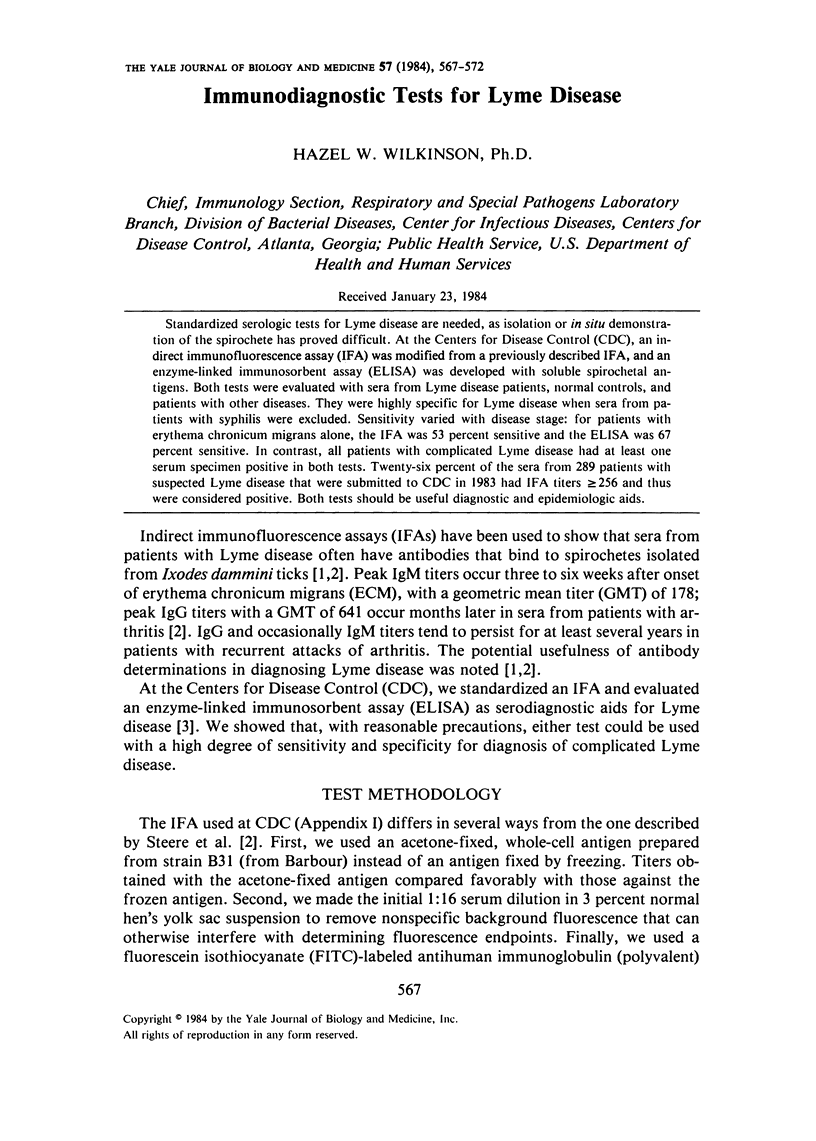
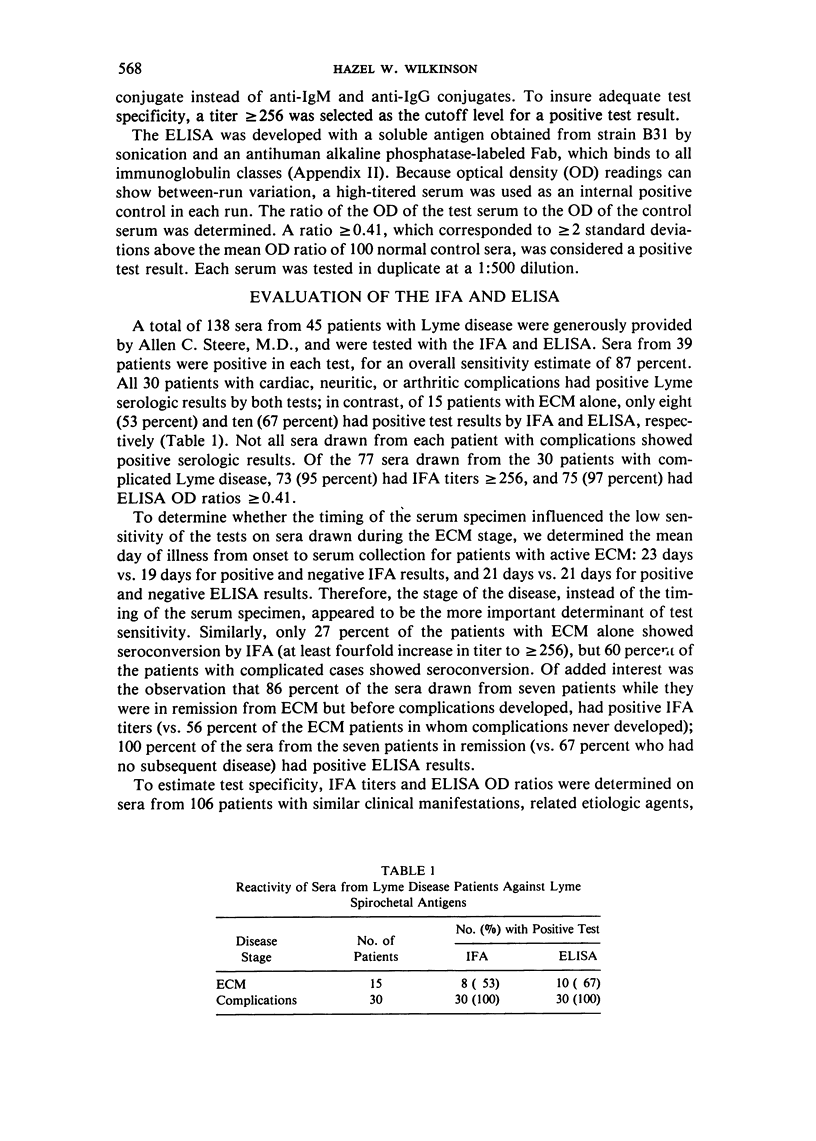
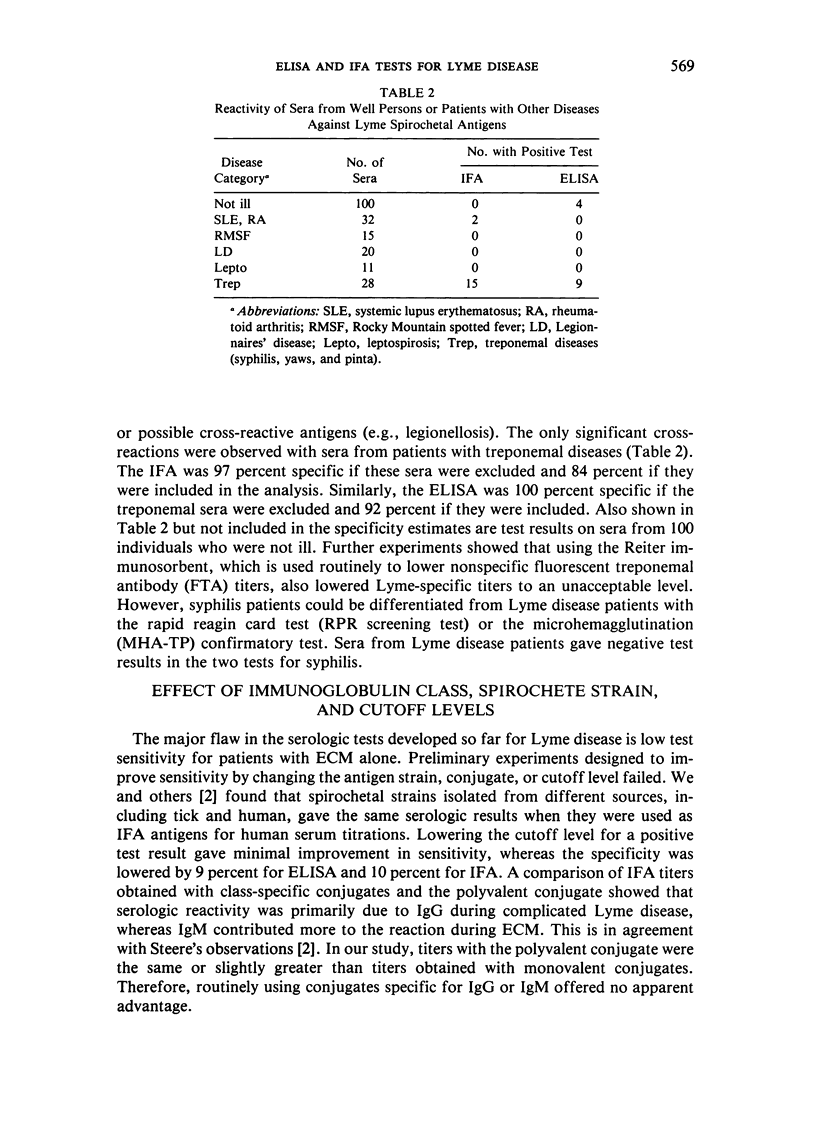
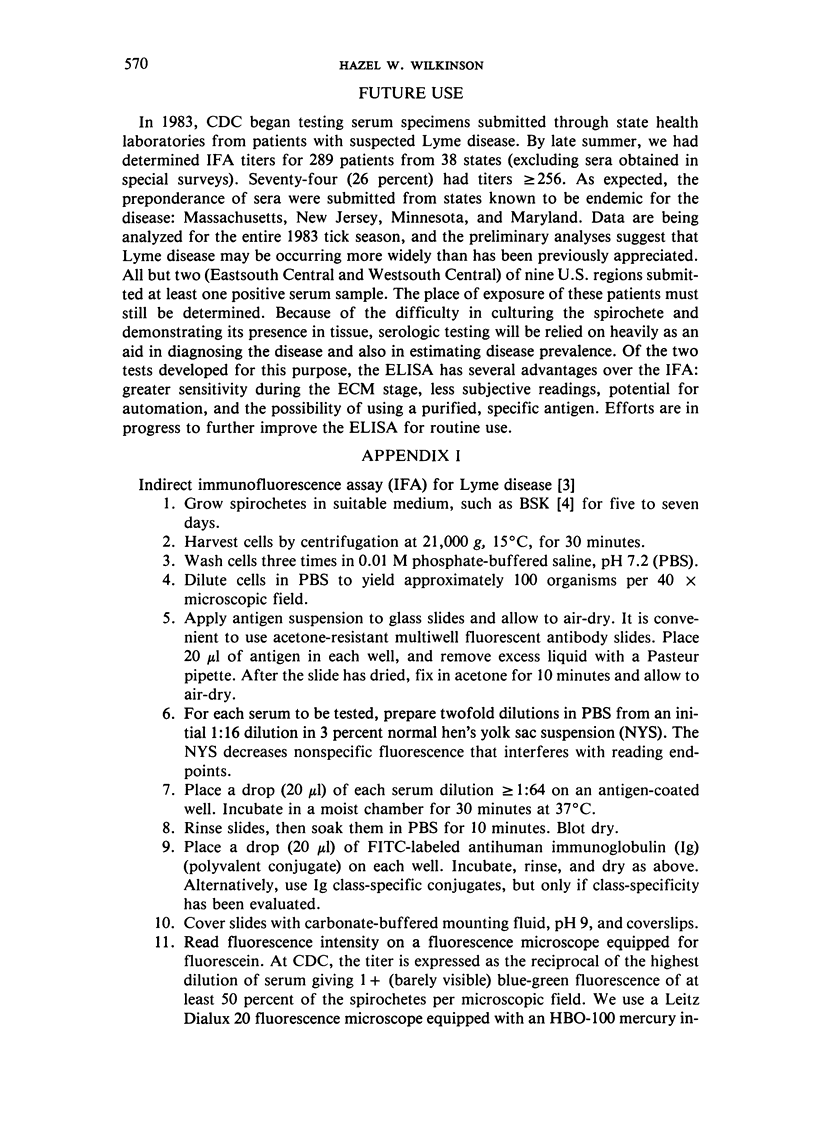
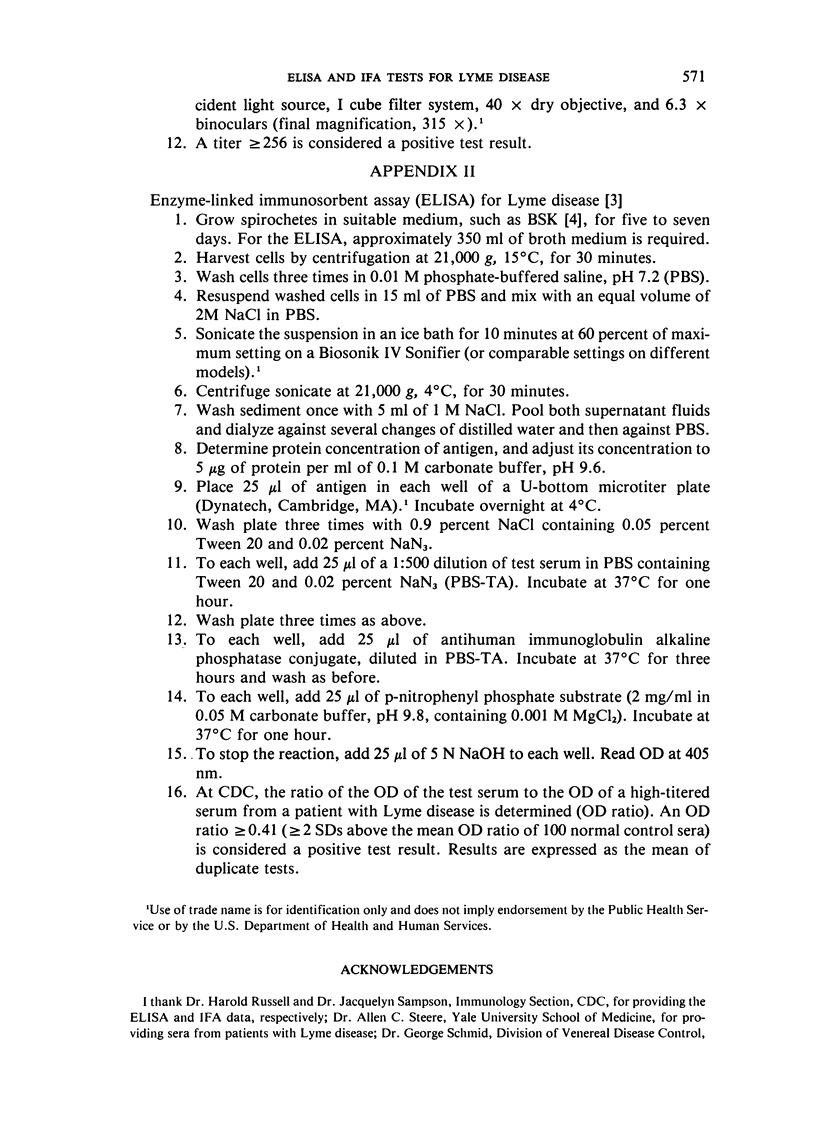

Selected References
These references are in PubMed. This may not be the complete list of references from this article.
- Burgdorfer W., Barbour A. G., Hayes S. F., Benach J. L., Grunwaldt E., Davis J. P. Lyme disease-a tick-borne spirochetosis? Science. 1982 Jun 18;216(4552):1317–1319. doi: 10.1126/science.7043737. [DOI] [PubMed] [Google Scholar]
- Russell H., Sampson J. S., Schmid G. P., Wilkinson H. W., Plikaytis B. Enzyme-linked immunosorbent assay and indirect immunofluorescence assay for Lyme disease. J Infect Dis. 1984 Mar;149(3):465–470. doi: 10.1093/infdis/149.3.465. [DOI] [PubMed] [Google Scholar]
- Steere A. C., Grodzicki R. L., Kornblatt A. N., Craft J. E., Barbour A. G., Burgdorfer W., Schmid G. P., Johnson E., Malawista S. E. The spirochetal etiology of Lyme disease. N Engl J Med. 1983 Mar 31;308(13):733–740. doi: 10.1056/NEJM198303313081301. [DOI] [PubMed] [Google Scholar]


